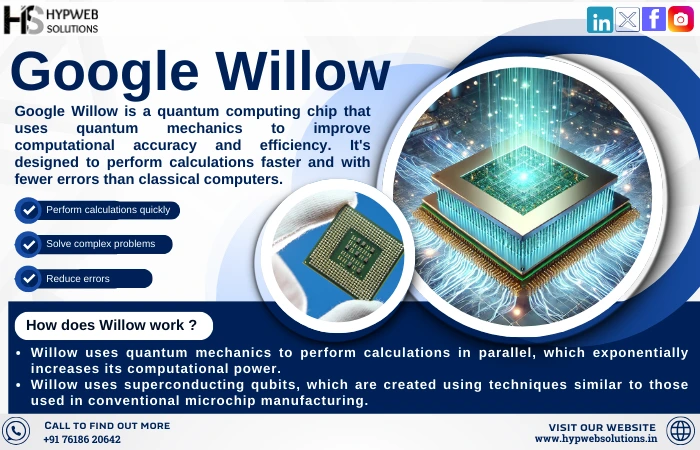Google Willow: Next Gen.


Google’s Willow chip is a custom-designed silicon processor that leverages state-of-the-art artificial intelligence (AI) and machine learning (ML) technologies. It is specifically optimized for high-performance computing tasks, focusing on applications such as natural language processing, image recognition, and predictive analytics. The chip’s architecture employs tensor processing units (TPUs), which accelerate matrix computations essential for training AI models, thereby enhancing performance while reducing energy consumption significantly.

AI-Centric Architecture:
Tailored for AI operations, the Willow chip uses TPUs to improve computational efficiency.
Energy Efficiency:Designed to consume less power than traditional processors, making it ideal for both edge devices and data centers.
Scalability:Its modular design allows adaptability across various hardware configurations, from smartphones to extensive cloud infrastructures.
Enhanced Security:Incorporates advanced security measures like hardware-based encryption to protect sensitive data.
Applications of the Willow ChipThe versatility of the Willow chip enables its use in multiple domains:
Cloud Computing:
Enhances Google Cloud services by accelerating AI workloads and lowering energy usage.
Consumer Electronics:Powers devices such as Pixel smartphones and Nest smart home products with advanced AI capabilities.
Autonomous Systems:Supports self-driving technologies by processing large volumes of sensor data in real-time.
Healthcare:Facilitates AI-driven diagnostics and predictive analytics, showcasing its potential impact on medical applications.
Edge Computing: Enables efficient AI processing on edge devices, minimizing reliance on cloud connectivity
